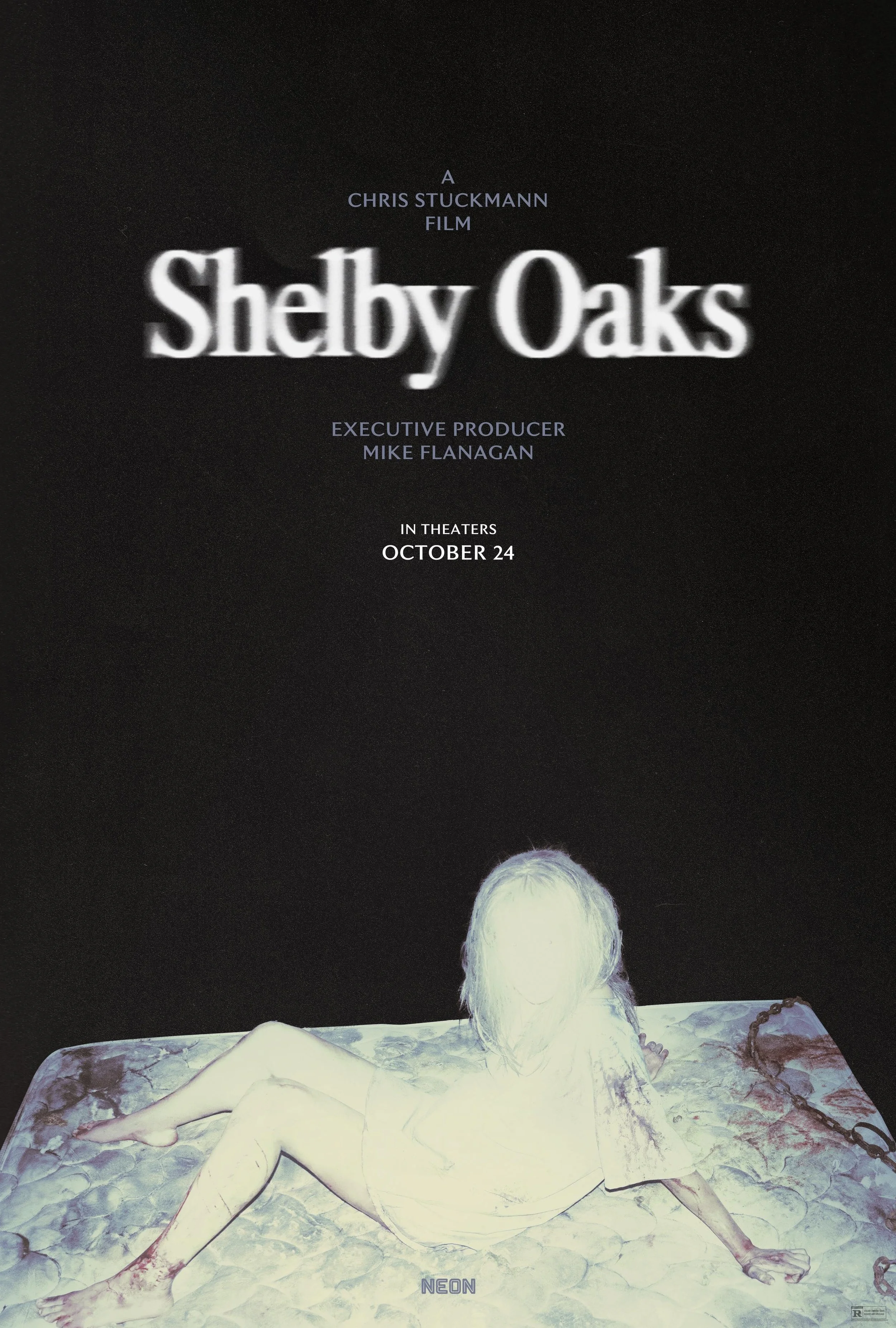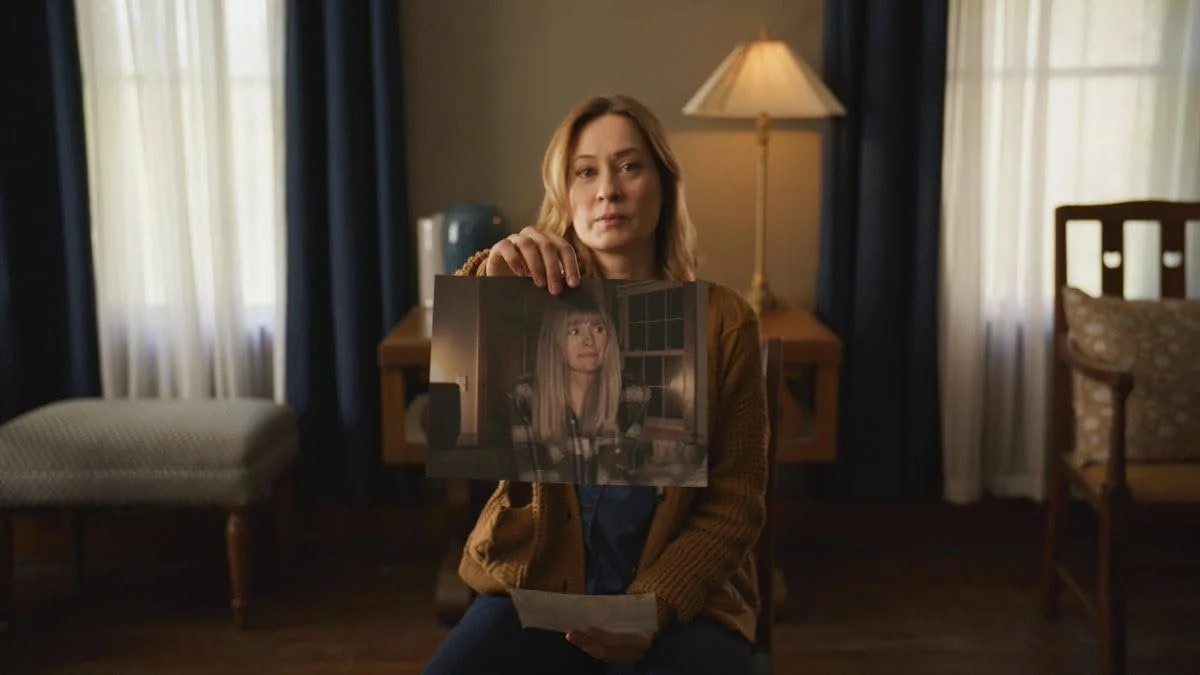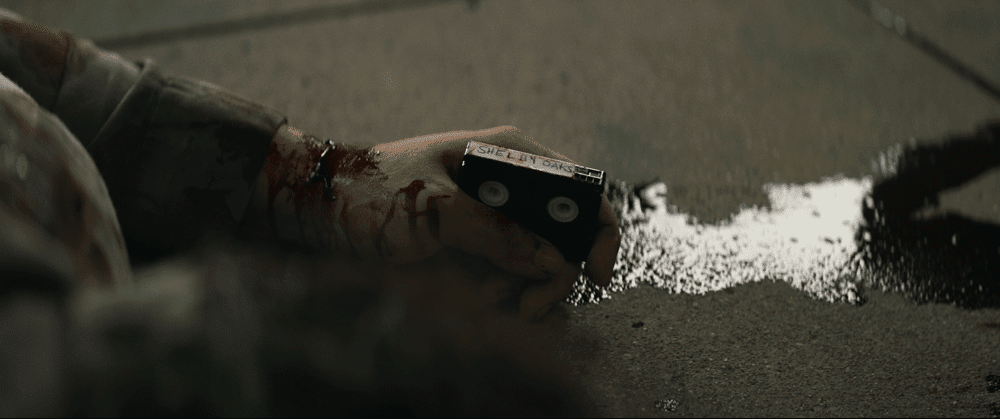(FANTASTIC FEST) The Supernatural Watches From The Shadows With “SHELBY OAKS” (2025)
Courtesy of Altitude
Every year, Fantastic Fest drops a few titles that make me grateful for the sleepless nights, the caffeine-fueled rewatches, and the long hours spent covering movie remotely from my dark little corner of horror journalism. One of the movies that added an extra dose of fear to my week was Chris Stuckmann’s “Shelby Oaks.” I was lucky enough to catch it while covering Fantastic Fest from afar, and even through the screen, the experience felt like being dragged into a waking nightmare. By the time the credits rolled, I was sitting in a pool of goosebumps, wondering when exactly the line between fiction and reality had dissolved right in front of me.
THE BREAKDOWN:
“Shelby Oaks” begins like the kind of slow-burn true crime documentary you might scroll past on a quiet evening. One that when you try to go to bed after, you find yourself wide awake, heart pounding, and checking your door locks by the halfway point. What makes it so unnervingly effective is that it wants you to think you know what you’re watching. You settle in for what looks like a cleverly constructed mockumentary. The ascetic of the grainy footage, the missing-person narrative, the eerily believable talking heads. Then out of nowhere with precision worthy of a magician, Stuckmann pulls the rug out from under you. What starts as a true crime investigation soon mutates into a supernatural horror film that will have you clenching your couch cushions in sheer terror.
At the heart of “Shelby Oaks” is Mia (Camille Sullivan), a woman spiraling into obsession over the disappearance of her sister, Riley (Sarah Durn), who once ran a YouTube channel called The Paranormal Paranoids. Years ago, Riley and her team vanished while investigating their local abandoned amusement park. From the opening frames, the movie plays like a found footage mystery wrapped in a documentary format. There’s a grounded, almost journalistic tone to it. It is so convincing that for the first twenty minutes, you might actually forget you’re watching a scripted film. Stuckmann, making his feature directorial debut, nails the authenticity. Every shaky frame, every awkward pause in an interview, every outdated VHS clip feels unsettlingly real.
Then something shifts (subtly at first). Mia’s interviews grow more erratic, the sound design starts to hum with unease, and the footage begins to feel haunted. Not by ghosts, but by guilt, grief, and something darker waiting just out of sight. By a certain point before the title screen, “Shelby Oaks” has transformed. The documentary facade crumbles, and what replaces it is a descent into supernatural horror so tense and claustrophobic it feels like the walls themselves are closing in.
The brilliance of “Shelby Oaks” is in that seamless transition. I very much enjoyed the way it uses the trust we give documentaries to make us more vulnerable to fear. Stuckmann doesn’t treat found footage and traditional narrative as competing forms. Instead, he fuses them together until you can’t tell where one ends and the other begins. It’s like watching “The Blair Witch Project” slowly evolve into “The Conjuring” without losing its indie soul. That hybrid style not only revitalizes both sub-genres, but it also gives the movie a psychological depth that lingers long after the final frame.
Camille Sullivan is extraordinary as Mia. Her performance anchors the entire movie, bringing emotional realism to an increasingly surreal story. She embodies obsession in all its messy, self-destructive forms. She is desperate, paranoid, and heartbreakingly human. As her reality unravels, so does ours. Brendan Sexton III and Michael Beach add strong support, grounding the movie with performances that make the story feel painfully believable. There’s no camp, no wink to the audience. Everyone plays it straight, and that sincerity is what gives “Shelby Oaks” its power.
Courtesy of Altitude
Visually, Stuckmann’s assured storytelling and tight direction announce him as a new force in genre filmmaking. The cinematography walks a razor’s edge between polished and chaotic, using darkness not as a gimmick but as a canvas. The camera lingers in corners a little too long, dares you to keep looking, and weaponizes silence with unnerving confidence. The movie doesn’t chase cheap jump scares; it builds dread through tension, texture, and imagination. When the supernatural does strike, it’s with such conviction that it feels like a logical but horrifying. It leaves the conclusion to the psychological buildup well with how the scares are executed.
Adding to its mystique is the movies’s backstory. “Shelby Oaks” isn’t just another horror release; it’s the most-funded horror movie in Kickstarter history, boasting over 4,500 backers and the support of executive producer Mike Flanagan (“Doctor Sleep,” “Midnight Mass”). That independent spirit radiates through every frame. You can feel the creative freedom, the refusal to conform to studio expectations, and that’s exactly what makes it so refreshing. This is horror made by someone who loves the genre, understands its psychology, and knows that the best scares come from emotion, not spectacle.
The overall tone of the movie is a haunting cocktail of grief and fear. It’s about the ghosts we create through obsession, and how chasing answers can sometimes open doors we were never meant to find, but also what may lurk in the shadows or come back to provide haunts from the past. The concept of belief as a summoning power and the idea that the imaginary can become real if we feed it enough fear is what gives “Shelby Oaks” an existential edge. It’s a story that doesn’t just scare you; it examines why we’re drawn to being scared in the first place.
Despite its emotional depth and slow-burn atmosphere, this movie still delivers pure, pulse-pounding terror. Stuckmann’s handling of the supernatural is masterfully restrained. So much so in fact that the horror isn’t shown so much as it’s felt. The third act is a whirlwind of disorientation and dread, the kind that has you questioning whether what you’re seeing is real or a manifestation of shared hysteria. It’s deeply unsettling, deeply effective, and deeply satisfying.
By the time the credits roll, “Shelby Oaks” has done something remarkable: it’s reinvented what a hybrid horror film can be. It’s not just found footage or narrative; it’s a fully realized fusion that blurs boundaries and heightens emotion. Stuckmann’s debut is confident, chilling, and hauntingly mature, showing that the arrival of a filmmaker who doesn’t just know horror but speaks its language fluently.
Courtesy of Altitude
When Altitude releases “Shelby Oaks” in UK and Irish cinemas October 29th. Audiences are in for something special. It’s a movie that crawls under your skin, takes root in your brain, and whispers to you long after you’ve turned off the lights. For a debut feature, it’s shockingly polished. For horror fans, it’s a revelation.
So yes, catching “Shelby Oaks” remotely for Fantastic Fest may not have had the communal thrill of an in-person screening, but when the shadows in my living room started to look a little too deep or I heard a slight tap on my window, I realized that watching it alone was the perfect way to do so with the lights off and every creak in my house making me wonder what may be peaking around the corner.
Whether it’s slashers in the woods, ghosts in the attic, or killers in the cornfield, ILHM Reviews brings you the frightful horror flick recommendations worth watching. Follow us on Instagram, be sure to listen to the the "I Love Horror" podcast and remember that if you’re a true fan of horror, every night can be a FRIGHT NIGHT!




